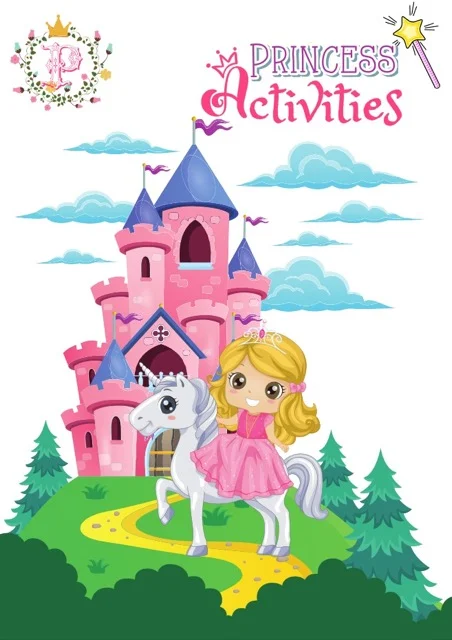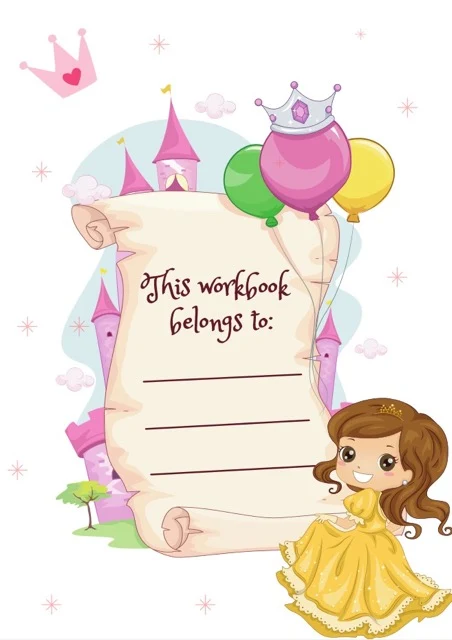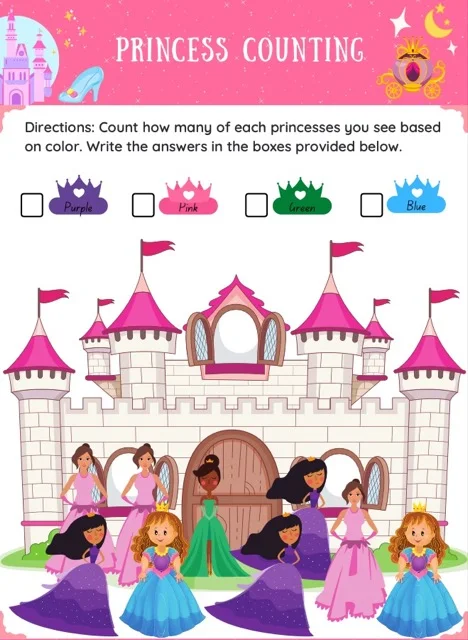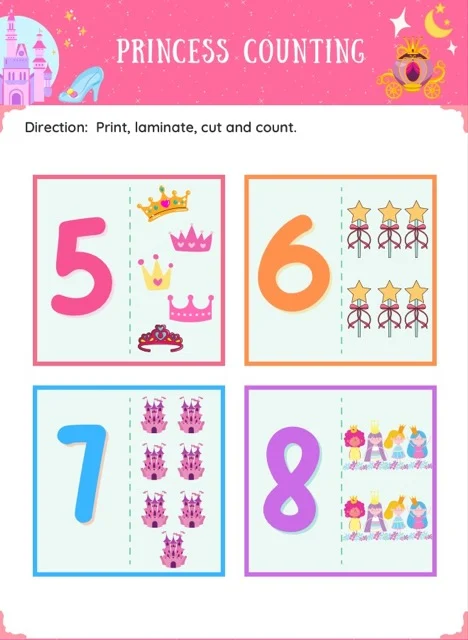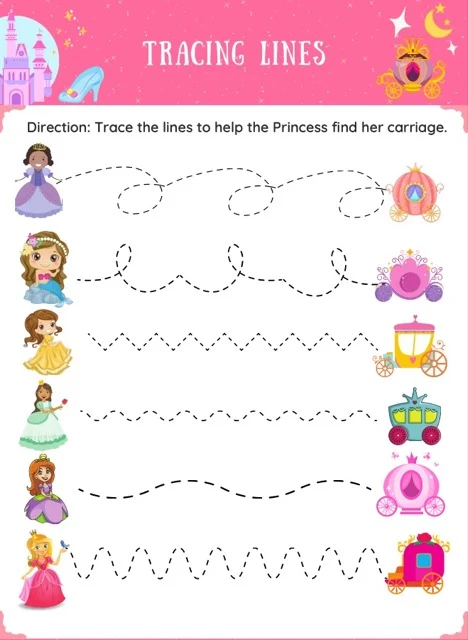Princess Activities: A Preschool Resource
Three sources describe "Princess Activities," an educational resource for preschoolers (ages 3-6). The resource uses a princess theme to engage children in activities that develop fine motor skills, cognitive skills, literacy, and numeracy. Its adaptability allows for use in various educational settings and modifications for diverse learning styles. Despite the potentially gendered theme, the creators emphasize inclusivity and its suitability for all children. The resource’s durability and reusability enhance its value for both educators and parents.
Princess Activities Resource Briefing
Princess Activities Resource Briefing
This briefing document reviews the main themes and key ideas presented in the provided source materials about a resource called "Princess Activities". It draws information from three sources: "Princess Activities: A Guide for Young Learners", "Princess Activities: A Study Guide for Educators", and visual excerpts from the "Princess Activities" resource itself.
Target Audience and Educational Value:
The "Princess Activities" resource is primarily designed for preschool and kindergarten-aged children, typically between the ages of 3 and 6. While the princess theme may be more appealing to girls, the resource is explicitly stated to be suitable for children of all genders.
The resource aims to be both entertaining and educational. It offers a variety of activities including:
●
Coloring pages: Featuring princesses, castles, and other magical elements.
●
Puzzles: Encouraging problem-solving skills and spatial reasoning.
●
Counting activities: Helping children learn basic numeracy skills.
●
Matching activities: Developing visual discrimination and memory.
●
Tracing activities: Improving fine motor skills and hand-eye coordination.
Skills Development:
The "Princess Activities" resource focuses on developing a diverse range of skills in young learners.
●
Fine motor skills: Coloring, tracing, and cutting activities strengthen the small muscles in their hands, improving dexterity and control.
●
Cognitive skills: Puzzles and matching games promote problem-solving, critical thinking, and memory.
●
Early literacy skills: Activities that involve letter recognition and word formation build a foundation for reading and writing.
●
Numeracy skills: Counting exercises introduce basic math concepts and number recognition.
●
Creativity: Coloring and drawing activities allow children to express their imagination and artistic talents.
Adaptability and Use in Educational Settings:
One of the strengths of the "Princess Activities" resource is its adaptability. It can be used in various educational settings, including preschools, kindergartens, and early learning centers.
●
Integration into lesson plans: The activities can be seamlessly integrated into existing lesson plans to reinforce concepts or provide engaging practice opportunities.
●
Independent practice: Children can work on the activities independently, fostering self-directed learning and skill development at their own pace.
●
Learning stations: The activities can be set up as fun learning stations, providing children with choices and promoting active engagement.
The activities can also be modified to suit different learning styles:
●
Auditory learners could listen to a princess-themed story while completing a coloring sheet.
●
Kinesthetic learners could act out scenes from a princess story while working on a matching activity.
Reusability and Durability:
The resource promotes reusability and durability. Many of the activities, such as coloring pages, can be printed multiple times for repeated use. Others, like puzzles, can be laminated for increased longevity and resistance to wear and tear.
Addressing Potential Bias:
While the "Princess Activities" resource might appear gendered due to its theme, the creators emphasize its suitability for all children. This challenges traditional gender stereotypes associated with princesses and encourages inclusivity.
Example Activities from Visual Excerpts:
The provided visual excerpts showcase the diversity of activities offered:
●
"Princess Counting" activity: This activity uses princess-themed images to teach children number recognition and counting from 1 to 10.
●
Matching activities: Matching crowns to their respective princesses encourages visual discrimination and memory skills.
●
Tracing activities: Tracing lines and patterns enhances fine motor skills and hand-eye coordination.
Conclusion:
The "Princess Activities" resource offers a promising approach to early childhood education. It leverages the appeal of princesses to engage young learners and foster the development of essential skills. The resource's adaptability, focus on various learning styles, and emphasis on reusability make it a valuable tool for educators and parents alike. While the theme might raise concerns about gender stereotypes, the creators' commitment to inclusivity and the resource's adaptable nature mitigate these concerns.
Princess Activities: A Guide for Young Learners
Princess Activities FAQ
1. What types of activities are included in the "Princess Activities" resource?
The "Princess Activities" resource includes a wide range of fun and engaging activities designed to appeal to young children who love princesses. Some examples include:
●
Coloring pages: Featuring beautiful princesses, castles, and other magical elements.
●
Puzzles: Encouraging problem-solving skills and spatial reasoning.
●
Counting activities: Helping children learn basic numeracy skills.
●
Matching activities: Developing visual discrimination and memory.
●
Tracing activities: Improving fine motor skills and hand-eye coordination.
2. What age range is this resource suitable for?
This resource is primarily aimed at preschool and kindergarten-aged children, typically between the ages of 3 and 6. However, the activities can be adapted for slightly older or younger children depending on their individual developmental level and interests.
3. What skills can children develop through these princess-themed activities?
These activities are designed to be both entertaining and educational, helping children develop a variety of important skills, including:
●
Fine motor skills: Coloring, tracing, and cutting activities strengthen the small muscles in their hands.
●
Cognitive skills: Puzzles and matching games promote problem-solving, critical thinking, and memory.
●
Early literacy skills: Activities that involve letter recognition and word formation build a foundation for reading and writing.
●
Numeracy skills: Counting exercises introduce basic math concepts and number recognition.
●
Creativity: Coloring and drawing activities allow children to express their imagination and artistic talents.
4. Are these activities only for girls?
While the "Princess Activities" resource features princess themes, it can be enjoyed by children of all genders. If a child is interested in princesses, castles, and fairy tales, they are sure to find these activities engaging.
5. Can these activities be used in educational settings?
Absolutely! These activities are perfect for use in preschools, kindergartens, and early learning centers. They can be incorporated into lesson plans, used for independent practice, or set up as fun learning stations.
6. Are the activities reusable?
Many of the activities, such as coloring pages, can be printed multiple times for repeated use. Others, like puzzles, can be laminated for durability.
7. Can these activities be adapted for different learning styles?
Yes, the activities can be easily modified to suit different learning preferences. For example, auditory learners could listen to a princess-themed story while completing a coloring sheet. Kinesthetic learners could act out scenes from a princess story while working on a matching activity.
8. Where can I find more information or purchase this resource?
[Insert information about where to find the full "Princess Activities" resource here.]
Princess Activities: A Study Guide for Educators
Princess Activities: A Study Guide for Educators
Short Answer Quiz
1.
Identify three specific skills that princess-themed activities can help children develop.
2.
Describe two ways the "Princess Activities" resource can be adapted for different learning styles.
3.
Explain how the "Princess Activities" resource can be used in educational settings.
4.
What age range is the "Princess Activities" resource primarily designed for?
5.
Give two examples of how the "Princess Activities" resource can be made reusable.
6.
What are the benefits of incorporating tracing activities into the "Princess Activities" resource?
7.
How do puzzles contribute to a child's development through the "Princess Activities" resource?
8.
Are the "Princess Activities" exclusively designed for girls? Explain your answer.
9.
Based on the visual excerpts provided, name three types of activities included in the "Princess Activities" resource.
10.
Considering the examples in the visual excerpts, explain how the "Princess Activities" resource incorporates numeracy skills development.
Short Answer Quiz Answer Key
1.
Three skills developed through princess-themed activities:
○
Fine motor skills (e.g., coloring, cutting)
○
Cognitive skills (e.g., problem-solving through puzzles, memory through matching games)
○
Early literacy skills (e.g., letter recognition, word formation)
2.
Adapting "Princess Activities" for different learning styles:
○
Auditory learners: Listen to a princess-themed story while coloring.
○
Kinesthetic learners: Act out scenes from a princess story during a matching activity.
3.
"Princess Activities" in educational settings:
○
Integrated into preschool, kindergarten, and early learning center lesson plans.
○
Used for independent practice or in learning stations.
4.
Target age range: Preschool and kindergarten-aged children (typically 3-6 years old).
5.
Reusable "Princess Activities":
○
Print coloring pages multiple times.
○
Laminate puzzles for durability.
6.
Benefits of tracing activities: Improve fine motor skills and hand-eye coordination.
7.
Puzzles and child development: Enhance problem-solving skills and spatial reasoning.
8.
"Princess Activities" and gender: No, they can be enjoyed by all children interested in princesses, castles, and fairy tales.
9.
Activity types (based on visuals):
○
Counting activities
○
Matching activities
○
Tracing activities
10.
Numeracy skills development: Activities like "Princess Counting" introduce number recognition and counting from 1 to 10 through princess-themed images.
Essay Questions
1.
Discuss the diverse range of skills that young learners can develop through engaging with the “Princess Activities” resource. Use specific examples from the provided materials to support your claims.
2.
Analyze the potential impact of incorporating princess-themed activities on children's motivation and engagement in learning. Consider both potential benefits and drawbacks.
3.
Evaluate the suitability of the "Princess Activities" resource for use in diverse educational settings. How might educators adapt or modify the activities to meet the needs of different learners and learning environments?
4.
Critically examine the argument that princess-themed activities can be enjoyed by children of all genders. Consider societal influences and potential biases related to gender and play.
5.
Imagine you are an educator using the “Princess Activities” resource. Describe a detailed lesson plan for a specific age group, outlining learning objectives, activities, and assessment methods.
Glossary of Key Terms
●
Fine Motor Skills: The ability to make small, precise movements using the hands and fingers.
●
Cognitive Skills: Mental processes involved in learning, thinking, problem-solving, and remembering.
●
Early Literacy Skills: Foundational skills for reading and writing, including letter recognition, phonics, and print awareness.
●
Numeracy Skills: The ability to understand and work with numbers, including counting, basic arithmetic, and number recognition.
●
Learning Styles: Different ways individuals process and retain information (e.g., visual, auditory, kinesthetic).
●
Educational Setting: Any environment dedicated to learning and teaching, including preschools, kindergartens, schools, and homes.
●
Lesson Plan: A detailed outline of a teacher's objectives, activities, and assessment methods for a specific lesson.
●
Learning Objectives: Clearly stated goals describing what students should know or be able to do by the end of a lesson or unit.
●
Assessment Methods: Techniques used to measure student learning and understanding (e.g., observation, quizzes, projects).
